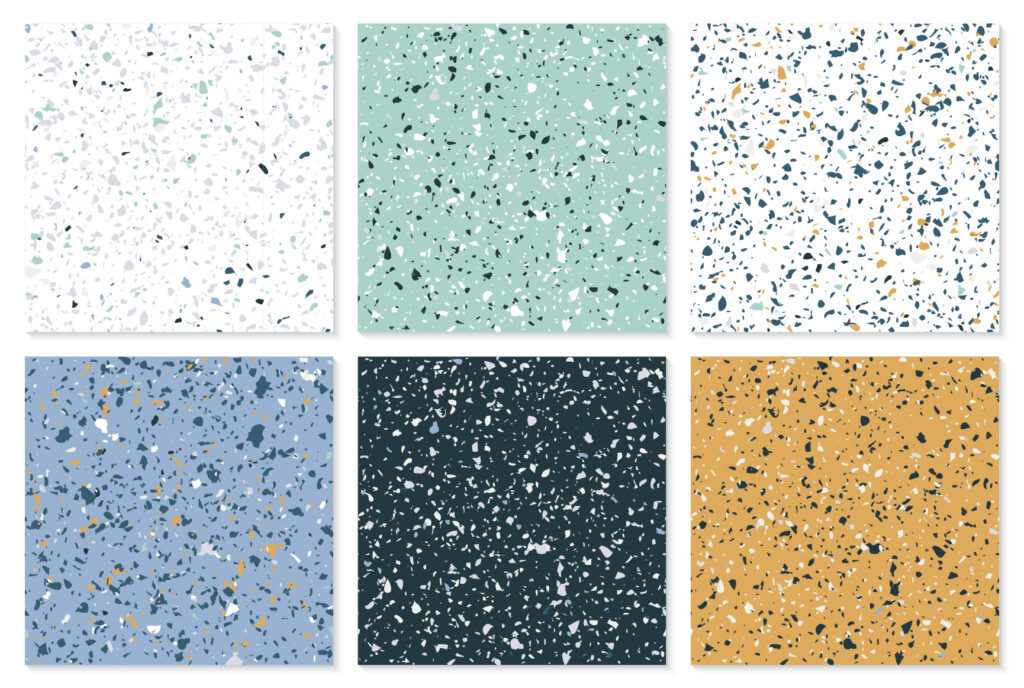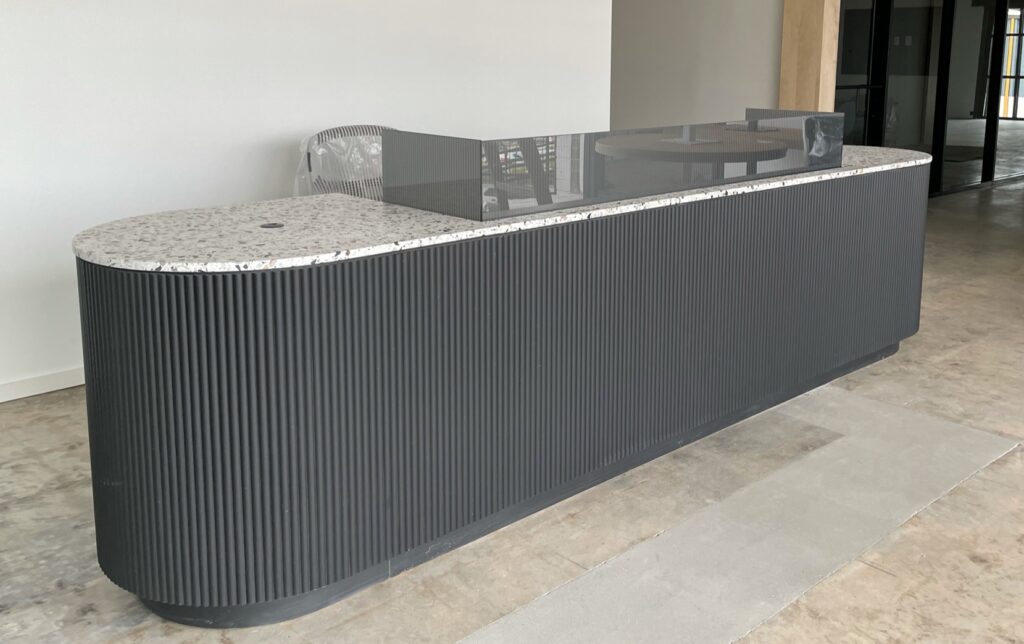


It began centuries ago, when ingenious Italian craftsmen scooped up marble fragments left over from aristocratic builds and poured them into clay mortar for use in their own humbler homes.
No doubt delighting their families as marble now sparkled on the walls and steps beneath their feet, these resourceful workers just happened to create an imperishable design trend – the composite material and technique named terrazzo also being the Italian term for terrace.
Like that other Italian-mastered art form, baking, the quality of the product is determined in large part, by the composition and quality of the ‘dough.’ And like dough batter, as a terrazzo tile or flooring mixture is prepared, there are infinite, subtle ways in which to compose, mix and color the various ingredients.
In addition to marble – bits of quartz, glass and seashell are common as well. Fancy an earthier, concrete mortar or a chemist-designed epoxy resin? Each brings different strengths and possibilities. This is why we see such famous terrazzo variety in the world, from the darkly distinctive, star-field terrazzo of the Hollywood Walk of Fame, to the bright, terracotta terrazzo of many Mediterranean sites.
That greenish, speckled floor of your middle-school cafeteria is an example of epoxy resin terrazzo.
With terrazzo, painting and texturizing are often creatively employed and, in the end, like baking, heat is applied to catalyze and cure things, completing the finish.

When considering the countertop for the reception desk in their new office lobby, the folks at Accent Decor decided on a lighter terrazzo, with this beautifully calming choice in mottled charcoal. Our carpenter/installers took precise care with the installation, sanding and finishing the counter to perfection.
The final step was to affix the countertop to a cabinet made of melamine and plywood, which also serves as base for the decorative tambour-slat paneling. The tambour style, evocative of a classic ‘Roll Top’ desk or door, requires that each tambour plank be routed to a specific profile and fitted upon a flexible backing sheet. This bit of carpenter’s slight-of-hand creates the visual impression of the vertical tambours conforming and bending seamlessly around the desk.
Mounting a privacy screen of grey glass with a frosted film, the reception island and most importantly the lobby’s decor are complete. So beckoning is this polished Terrazzo, you just can’t resist touching the surface!





If you enjoyed reading this post, take a look at our other post in the Material Difference series here:
Talk to us today to find out how we can support you with your exhibit or event, ensuring a memorable and impactful brand experience.
Contact Us